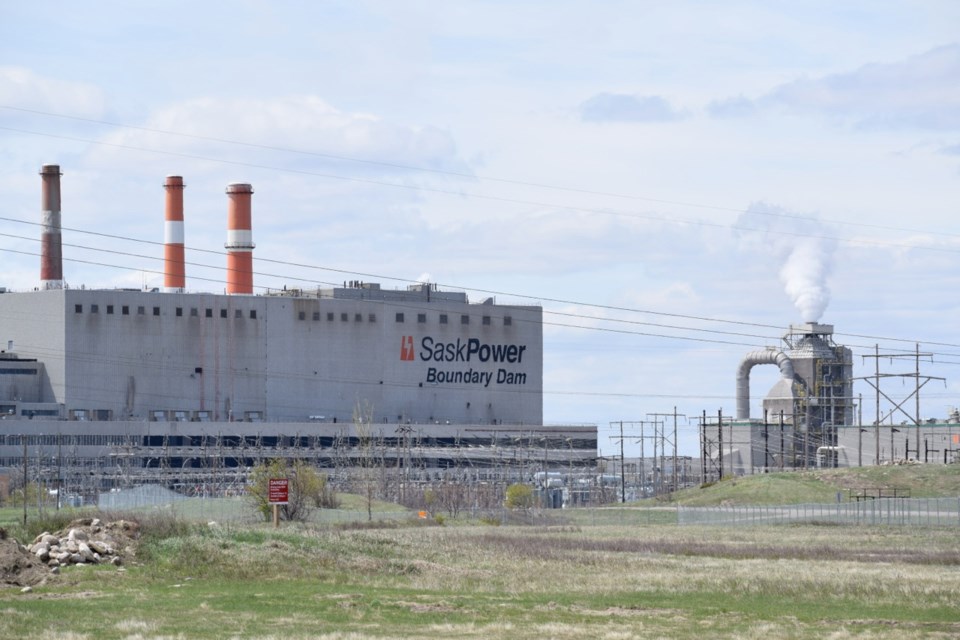An equivalency agreement between the provincial and federal governments will extend the life of Units 4 and 5 at the Boundary Dam Power Station.
Dustin Duncan, the minister of the Environment and also the minister responsible for SaskPower, confirmed in an interview with the Mercury on Friday that the pact has been signed.
It was ratified by Catherine McKenna, the federal minister of the Environment and Climate Change, on May 2. Duncan followed suit the next day.
He noted that before the agreement is official, the federal cabinet still has to pass an order in council, which is slated to occur in June, but Duncan said that would be “a formality.” Once that is taken care of, the equivalency agreement will come into effect.
If the two sides didn’t reach an agreement, then Units 4 and 5 at Boundary Dam would have come offline at the end of this year. Instead, Unit 4 will be retired at the end of 2021, and Unit 5 will come offline at the end of 2024.
“It’s a big relief, just with a little more certainty that it gives the province and SaskPower, and certainly the affected employees, especially with Boundary Dam 4 and 5, and the associated mining jobs as well,” said Duncan.
This agreement has been a long time coming, he said, and he’s pleased they have finally put pen to paper.
“The end of this year is not that far away, and we certainly were not planning to wind down the operations. It was certainly our intent to operate the units out for the next number of years,” said Duncan.
The agreement calls for the federal government to recognize the provincially-passed coal-fired electricity regulations as being equivalent to the federal regulations, based on outcomes.
Over the next 11 years, there will be three different stages for emission regulations. The first will cover 2018 and 2019. The next will be from 2020-2024, and the third will be 2025-2029, which is when conventional coal-fired power plants will have to come offline.
“There are three different periods where we have to achieve a certain emissions profile through SaskPower,” said Duncan. “The way that we’re able to achieve that is rather than looking at the federal regulations, unit by unit emissions for each of those units, we’re allowed to look at the overall fleet of SaskPower.”
The flexibility that SaskPower has is due to the lower emissions generated by Unit 3 at Boundary Dam, which was retrofitted with carbon capture and storage capabilities.
Unit 3 is below the emission standard set out in Canada for coal-fired generation, and so SaskPower can shift them to help plants that are higher than the performance standard.
“It’s really looking at what the emissions are over that time period, over the next 11 years, and achieving the emission targets just through a different approach than what the federal government has proposed for coal-fired (power),” said Duncan.
If SaskPower isn’t able to meet those emission targets, then the Crown corporation would be in violation of the agreement, which would allow the feds to step back in and determine the emissions regulations for coal-fired power in Saskatchewan.
“Based on the projections over the next decade, we don’t think there’s any risk of the federal government stepping in and deciding to re-regulate the provincial electricity sector rather than the province,” he said.
Duncan recalled having a conversation about the equivalency agreement in 2011 with Peter Kent, the federal minister of the Environment of the day. The Conservatives were still in power at that time, and Kent was touring Boundary Dam.
Those discussions have continued for both sides through several different ministers, and a change in government at the federal level from the Conservatives to the Liberals.
“This has gone through a number of iterations where we had signed an agreement to work towards equivalency, and then having the draft regulations and passing provincial regulations and now actually having the equivalency agreement.”
The only thing that would allow for Units 4 and 5 to get a further extension beyond the new scheduled closing dates of 2021 and 2024 would be to retrofit them with carbon capture and storage technology, a measure the province has already said they won’t do.
Those units are nearing the end of their life cycles.
The equivalency agreement was published in the Canada Gazette in late December of last year. While there weren’t any concerns raised about the document in the first 60 days after publication, there was a second 60-day comment period added from the federal side.



.png;w=120;h=80;mode=crop)
